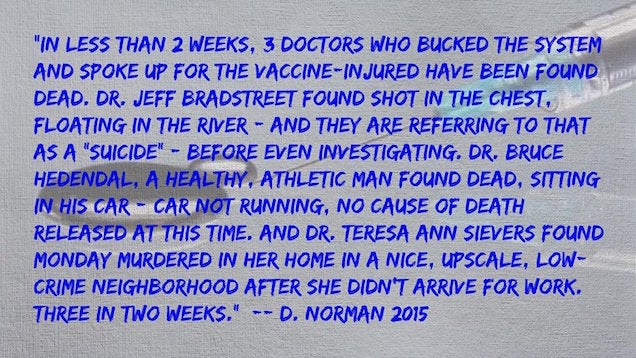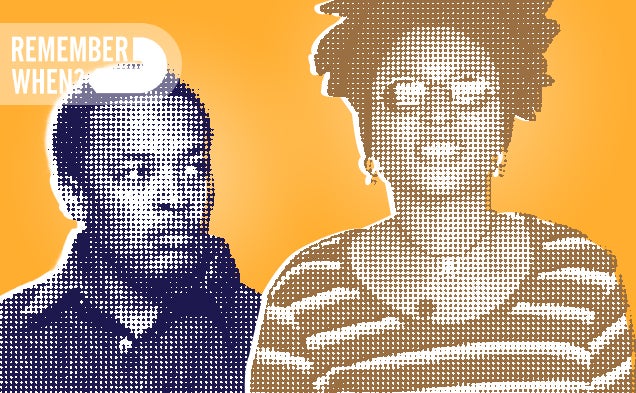![Ice-T & Coco Discuss Their New Baby, Talk Show, and Forever Love]()
Ice-T and Coco finish each others’ sentences. It’s something you might expect from newlyweds, or couples otherwise in the dawn of their relationships, but the duo has been married since 2002, and their tangible affinity for one another has been a representation of relationship goals since Ice Loves Coco, the reality show chronicling their lives that ran on E! from 2011 to 2014.
Next week, the duo will start their newest endeavor: a daytime talk show called Ice-T & Coco, when they commence their deserved place in history as a gangsta Regis & Kathie Lee. Last week, while filming the show in front of a live audience, Coco also announced that she is pregnant with the couples’ first child together (Ice has a son and a daughter from prior relationships), putting her in the fun position of starting a new job and being pregnant for the first time simultaneously.
These two are fucking great. I called them to discuss their new jobs, new bundle of joy, and the secrets to having the kind of relationship we all wish for.
Hi Ice and Coco!
COCO: You know what, I feel like I’ve been a part of Jezebel’s lives for a very long time! I’ve been on Jezebel since, I think, day one! Ice is gonna get on the line in a second, he’s playing XBox as we speak.
ICE: Hello!
Hi! What are you playing?
ICE: I’m playing Payday, Payday 2.
I have no idea what that is. I play, like, Candy Crush.
ICE: Oh, like games you play on your phone.
COCO: I like Waze!
Waze?
ICE: It’s a game you play in the car.
That seems dangerous!
COCO: It’s meant for the passenger, though, so the passenger plays while the driver is driving, and it gives them something to do. It’s stupid really, but it’s fun.
Whatever works. So, you just announced that you’re having your first child together. Congratulations!
COCO: I knew that was coming! Thank you so much!
ICE: Thank you! We announced it on Friday. We were taping our premiere show on Friday that’s gonna show on Monday, and we told the studio audience about it and then it took a couple of days and it just popped off really heavy.
COCO: But I just really put it out on my social media, like, hey: I’m confirming it today. No speculation, it’s really happening, I’m glad that’s out there, BOOM. I am pregnant.
ICE: Done.
So the timing is pretty crazy, with you starting a new talk show and having a new baby.
COCO: We didn’t plan for this! Everybody’s thinking, well did you guys plan…
ICE: I’m not that good, I’m not that accurate. [laughs]
COCO: Yes! To people who are like, how is that possible that you’re coming out with a talk show and then you break the news... did you guys plan that? I’m like, no, everybody knows you can’t plan a pregnancy like that! I guess it’s just meant to be and then actually it was perfect timing because I don’t think I could hide this baby bump for too long, it’s gonna come out any day now. Coco’s changin’!
How does it feel to be having a new career and and your first child together, as well?
COCO: I’m definitely like a multitasker, I feel like I can do everything. I already have it in my brain that I can have a baby and can still do my businesses and make sure my man is happy so I don’t have a problem with that. Everybody is like, ‘Well that’s gonna change.’ Of course it’s gonna get a little hairy when I have a baby, yeah, it’s another human being. But I’m just gonna have to figure it out. I mean, there’s people who have like, nine babies in their household and they figure it out. I just really want to stand up for that strong woman crowd of women who follow me—as it is think I’m a strong woman. I can’t just have a baby and turn around and like, fail. They’re relying on me! I hope I can do a good job!
ICE: You’ll do great!
COCO: I’ve never had a baby before, so I’m just going with the rhythm of everything else.
I don’t think anyone would expect you to fail. Were you planning to have a kid or was this just like… oops!
ICE: No oops.
COCO: The thing is, I already knew my whole life that 35 is a good age to have a baby, I think you’re away from your 20s, you’re out of that crazy era, and when you move into your 30s you know what you want out of life. So I thought 35 was like the golden age and, what do you know, when I hit 35, Ice and I talked about it and were like, okay, let’s make this happen. I was on the pill for 17 years so I was kinda concerned about that, and I talk about that on the show, because you know, you’re on the pill for so long you think that then you won’t be able to get pregnant for quite some time.
And what do you know, it was a miracle: I got pregnant instantly. I’m 36 now but I got pregnant at 35, so it was like perfect timing. We talked about it, we knew we wanted to do it that year and it happened. So we got what we want.
That’s great! So about the show, you’ve said it’s going to be pop culture-y. What is your vision for it?
ICE: Well we already know what it’s gonna be because we shot five days of it, it’s gonna be madness. One thing it’s not: it’s not gossip. We’re not dealing with today’s current events, so to speak. We’re just kinda like vibing off things that are hip now, people that are hip now, and that wanna come on the show and have some fun. One of my favorite people is Jimmy Fallon. I love Conan O’Brien. And I always love going on their shows cause they don’t dig up any dirt, they just kinda roll with you and what you wanna talk about. And I feel those are the best in the business, that’s the top of the food chain. So we’re gonna kinda reenact that with a husband and wife but with just a bunch of madness. It’s insane, I just can’t even explain. You just gotta watch it.
COCO: Everything is funny, from the moment you click in to the moment you click out, it’s funny. It’s like a feel-good show, when you’re watching it you should be laughing. If you’re not laughing you should just watch another show, honestly. I’m not saying that I’m funny, I think Ice is funny and I just chime in whenever someone needs to say something, and I think that we just bring in this element of his side and her side.
ICE: And a lot of love. We love the people that are on the show, we love each other, our dogs are there. Soulgee is there. If you watched anything of our reality show, it’s just that cool energy we like, and I’m digging it. I tell people, if you watched the first show, and you don’t like it, then don’t even waste time watching the second show. It’s not your cup of tea.
Coco: Ice is right, you feel like you’re watching Ice Loves Coco in a talk show format.
You’ve worked together for many years but this seems like it’s in a different capacity. Has it changed much?
ICE: Nah, it’s work you know. And Coco has a crazy work ethic. We’ve got a bunch of producers—a couple of the producers are actually from Oprah, imagine that. They know what they’re doing, Candi and Bridgette. They make it easy for you because they set up the segments, they come to us and say, What do you think about this, what about this, what about this, yeah, no, yeah, no no, yeah. Oh that’ll be fun, no, oh yeah. And they only pick the ones that you’re excited about and they just set it up. Just imagine coming into work everyday and they say “Julianne, you’re gonna meet five people today.” And you just meet ‘em! You know, it’s easy like that. You just meet ‘em!
You sound so excited.
COCO: We are! Now that we’ve been shooting we’ve been like wow, this is fun, going to work is fun! We actually get to act like ourselves on the set. That’s how we are normally at home.
ICE: And I would let you know if I didn’t like it. I think that Coco and I, when you’re buying into the brand, you’re buying into us as people. You like us, and you just wanna see how things bank off of us. You’re not buying us to change Coco or to change Ice. You just see what happens when you put this person in front of Ice, you sit back, and you go ‘This is gonna be good.’ [laughs]
What are your secrets for working together as a couple? That situation seems like it could get a little hairy sometimes.
COCO: I think you just let the other person be themselves. Ice knows who he is, and he knows who I am, so he just lets me talk.
ICE: I also think you’re gonna bump heads if you have real control issues but I think the fact that I’ve been in the business 20 years before Coco, she has that little bit of willingness to say, okay, Ice knows what he’s talking about. And if I give her a pointer she doesn’t say, ‘Oh, you’re trying to tell me what to do.’ She’s like, me and Ice have got this far. She respects my opinion, and I respect her opinion. But when you have two people and both people wanna be in charge, then you have a problem.
I guess that’s how you have to work the balance in any relationship.
Ice: Yeah, and sometimes you gotta say, You know what honey, you drive. I don’t mind that, and my attitude is, if you wanna drive, well take the wheel! I don’t have a problem sittin’ back ridin’ either, you know! When both people really understand that it’s their benefit to work with each other, it’s a blessing to have somebody, then you really work well together. We call ourselves “teammates.” You have to be teammates, not opponents. Assets, not liabilities.
I look up to you two as a platonic ideal of a good relationship. What are your secrets to longevity?
ICE: You know what it is, you just have to admire the person you’re with. I gotta look at Coco and say, Coco’s the baddest model, she does her shit, girls love her, they wanna be her, she’s such a sweetheart, she’s the nicest person I ever met. And Coco has to be able to look at me and say, Ice has done a lot of shit, he deserves the respect. You know, I can’t walk into Ice and act like he’s just some bum on the road, he’s really done some shit. And if you have that kind of admiration for each other, the love is absolute. If one person is looking at the other saying you really ain’t shit, well there you go. You got a problem.
And that’s when you gotta dump your man. So Ice, in the trailer for this show, you mentioned that you invented gangsta rap. Obviously you were vilified for it, and I think maybe people who are younger have forgotten a bit. Do you think gangsta rap was misunderstood?
ICE: Nah, gangsta rap is what it was. I was a bad person. I mean, I spent most of my life as a career criminal. I was robbin’ banks, I was doing all kinds of things. I just think that, you know, it doesn’t have to do with where you start in life—it’s where you end up. My road has gone very different than the way I planned it. I play a cop on TV! Maybe you can take away from this and say, people have options and don’t think just cause somebody starts one way in life they end up another way. If you caught me at 18, you would have said, He’s never gonna be anything, he’s just a problem. But with the right guidance, the right opportunities, you can change your life. Who would ever thought I’d be doing daytime talk shows with middle class white American women? What the fuck! Me? I’m like the worst person.
But they would never get a chance to even hear my brain without stuff like this. Even when I’m on Twitter, you should see the women who follow me who are like, I love you, I love the shit you say. It’s very hardcore stuff, but they’re not gettin’ it from their corny husband. A lot of women really deep down inside want a bad boy, someone who really pushes the system. So when you watch this show, you’re not looking at Coco and husband. You’re looking at two extremes. Coco is an extreme blonde bombshell. And I’m an extreme black male. And we found peace and happiness somewhere in the middle. So it’s a very hip, unique thing.
This is off the topic, but me and Coco wanted to write a relationship book. And the square lady that sat there was like, It’s just too edgy. And I’m like, Well, bitch, this is an edgy relationship! Who do you want to write the book? Ozzie and Harriet no longer exist! And I think why Jezebel might like us is, we’re like a rock and roll couple. We’re the couple where the girl wants her husband to be a rock star, the guy wants his wife to be a hot model.
COCO: It’s a new age in relationships. And that’s another thing when you watch the talk show, if you didn’t get Ice and Coco before, if you never saw a reality show, you’ll understand when you watch us, because we might look completely different together, yes we do, but at the same time when you watch us, we have so many similarities. I think people will get a kick out of it.
ICE: I just don’t look as good in a bathing suit.
COCO: You know what, he wishes he had the balls to do that though.
ICE: Of course I do.
COCO: A lot of people wish they had the balls to do what I do, just to be out there, have that confidence. Believe me, half the time I’m kinda unconfident inside, but I have to act confident.
ICE: I tell people all the time, the kind of modeling Coco does? Before you diss it, go stand in front of your mirror butt naked and just look at yourself, and then say, do you feel like doing a photo shoot? [Laughs]
COCO: Yeah, it’s hardcore, but I’m blessed to continue. I’ve been modeling for 18 years now.
ICE: She just did a photo shoot! She’s 35, she’s still doing swimsuit shoots!
COCO: I did a photoshoot while pregnant and no one even knew! So it’s a nice thing for the supporters that have been like, Right on Coco, we love you, we love you. There’s a lane of women who still—
ICE: Strong women.
COCO: The strong women love me. It’s the iffy women who are like I don’t know about that Coco, but I think you should give me a chance. Just a little chance.
ICE: Or watch the show just to hate on her.
COCO: You can hate on me, but I think you should give me a chance if you didn’t watch my reality show. You can pick me apart, do whatever you want to do. But at least give me a chance.
Ice & Coco debuts Monday, August 3, on FOX-owned stations in New York (WNYW), Los Angeles (KTTV), Washington D.C. (WTTG), Atlanta (WAGA), Phoenix (KSAZ) and Detroit (WJBK).
Contact the author at julianne@jezebel.com.
Image via AP.
































































